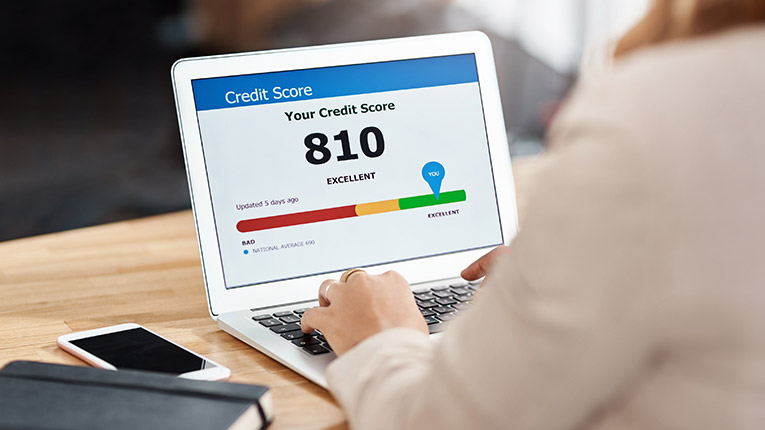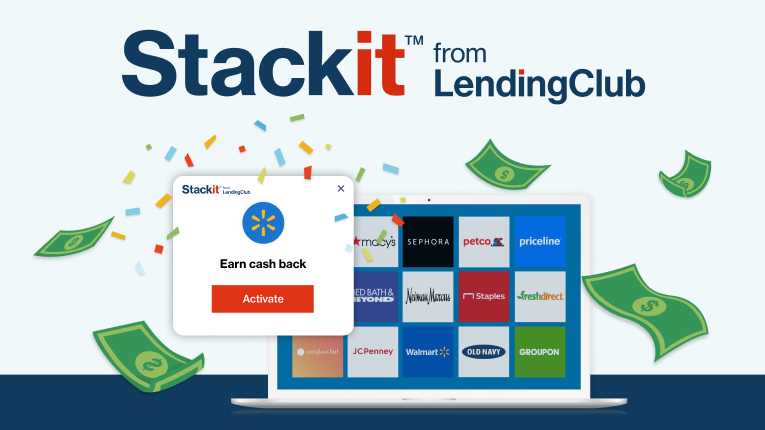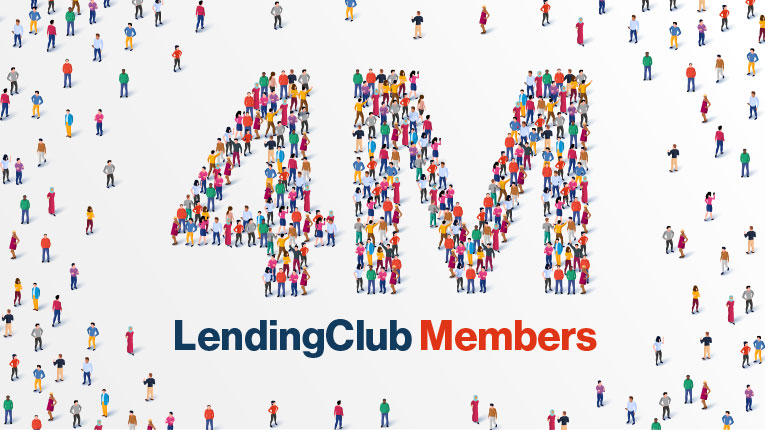How to Check Your Credit Score

Your credit score is an important indicator of your financial health. It indicates to lenders how likely you are to repay a loan or credit account on time which influences the loan terms and interest rate you may receive. Knowing how to check your credit score can potentially save you thousands of dollars every year.
Here's what you need to know about the best ways you can check your credit score, types of scoring models, what your credit score means, and why it’s important to check your score regularly.
4 Best Ways to Check Your Credit Score
There are several ways you to access your credit score, both for free and on a paid basis. Paid credit monitoring services typically offer many extra features that you may or may not want to take advantage of. Here are four of the main ways to access and check your credit score.
1. Check with your credit card company or lender.
Many lenders, major credit card companies, banks, credit unions, and some auto loan companies offer free credit scores access to all their customers as a benefit of doing business with them. Your score may be listed on your monthly statement or found by logging in to your online customer account portal. Some financial institutions may even allow you to access their free credit score services even if you're not a current customer.
In addition to your free credit score, you may also receive other benefits, such as access to your credit reports, report highlights, real-time alerts when changes are made to your score, weekly or daily score updates, and more. Additionally, you may also be offered free credit monitoring services in the event of a data breach.
2. Talk to a non-profit financial counselor.
Not-for-profit credit and housing counselors trained by the U.S. Department of Housing and Urban Development (HUD) can usually provide you with a free credit report and score, as well as assist you in reviewing them.
3. Use a credit score monitoring service.
You may have noticed many services and websites advertising a “free credit score.” While some of these sites may not charge a fee (because their services are funded by advertisers), others may require you sign up for a credit monitoring service that carries a monthly subscription fee before you’ll get your “free” score. Often advertised as “free” trials, if you don’t cancel these services within the specified period (often as short as one week), you could wind up being charged a monthly fee. Before using one of these services, be aware of any monthly subscription fees, and make sure understand what you’re signing up for and how much it could cost you.
Credit monitoring services offer all kinds of other features, such as access to your credit score from all three credit bureaus, identity theft protection, dark web surveillance, and other premium features that usually come with fees. If you’re interested in any of those, be sure to shop around.
4. Buy your credit score.
You can buy a score directly from the credit reporting companies. For instance, you can buy your FICO® Score credit score at myFICO®. There are other companies and services that may also offer scores for purchase. Keep in mind, if you choose to buy your credit score, you’re not required to also purchase credit protection, identity theft monitoring, or any of the other services that may be offered to you at the same time.
Sometimes, credit score services are offering an "educational" credit score, instead of a score that a lender would use. The Consumer Financial Protection Bureau (CFPB) published a report on how to tell the difference between educational scores and the scores lenders use. The CFPB found that educational scores will be quite different than the score that used by a lender in one out of every four people. When deciding where to get your credit score, it’s important to know what kind of score it is.
Types of Credit Scores
Depending on where you look, there are several different credit scores you may come across. The two major credit scoring companies are FICO® and VantageScore®, and both have multiple credit scoring models:
FICO® Score: Developed by the Fair Issac Corporation and launched in 1989, FICO was a pioneer in developing a method for calculating credit scores in the U.S. When calculating your score, FICO evaluates five factors: payment history, total credit used, length of credit history, new credit accounts, and credit mix. There are a few dozen different versions of the FICO® Score credit score out there, including specialized models for auto loans, credit cards, and mortgage loans.
VantageScore® Credit Score: VantageScore is another popular credit scoring model, developed jointly by the three major credit bureaus: TransUnion®, Experian®, Equifax®. This score was launched in 2006, and while it includes the same factors as the FICO® Score, it weighs them differently.
While the VantageScore scoring model is available to thousands of lending institutions, the FICO scoring model is more widely used in individual lending decisions. Usually, you won’t know which model a lender will look at when you apply for credit.
You may come across other credit scores as well. For example, the three major credit bureaus all have their own proprietary credit scores, but these are only for “educational” purposes and aren't used in lending decisions.
What Your Credit Score Means
Credit scores are designed to predict credit behavior, such as how likely you’re to repay money borrowed. If you're relatively new to credit or you've made some mistakes in the past, you may have a lower credit score. This is an indicator to lenders that you could be at risk of defaulting on payments in the future. In contrast, a high credit score generally suggests you’re more likely to pay on time.
Here's a quick look at the credit score ranges for FICO and VantageScore:
FICO® Score Categories | Range |
|---|---|
Exceptional | 800 - 850 |
Very Good | 740 - 799 |
Good | 670 - 739 |
Fair | 580 - 669 |
Poor | 300 - 579 |
VantageScore Categories | Range |
|---|---|
Excellent | 781 - 850 |
Good | 661 - 780 |
Fair | 601 - 660 |
Poor | 500 - 600 |
Very Poor | 300 - 499 |
Generally, to qualify for the best interest rates on unsecured personal loans or credit cards, you need to have good credit or better. You can still get approved for loans and credit cards if you have fair or poor credit, but you can typically expect lenders to charge higher interest rates and fees to compensate for the additional risk.
Check Your Credit Score Regularly
It's a myth that checking your credit score hurts it. While it's technically an inquiry, it’s a soft credit inquiry, so there's no impact to your score. In fact, it's a good idea to check your credit regularly because it can help you:
Understand how your actions affect your score, particularly if you're new to credit.
Track your progress in improving your credit score.
Spot potential issues before they cause long-term damage.
Address potential inaccuracies or even fraud before it wreaks havoc on your life.
As you work to build your credit, you'll be able to benefit from lower interest rates, better credit card rewards and benefits and even potentially qualify for lower homeowner's insurance and auto loan refinance rates. Additionally, landlords may review your credit score when you apply for a lease, and while employers can't check your credit score, they can, with your consent, review your credit reports. So, having good credit can give you an advantage over other lease applicants or job candidates.
The Bottom Line
There are several ways to get your credit score, including from your credit card issuer or other lender, a non-profit counselor, a credit reporting agency, or from a credit monitoring service. While there are plenty of credit monitoring services offering your credit score for a fee along with other premium features, for most people, free credit monitoring services are enough. Take your time to compare what's available to determine which one is best suited for your needs.
You May Also Like












